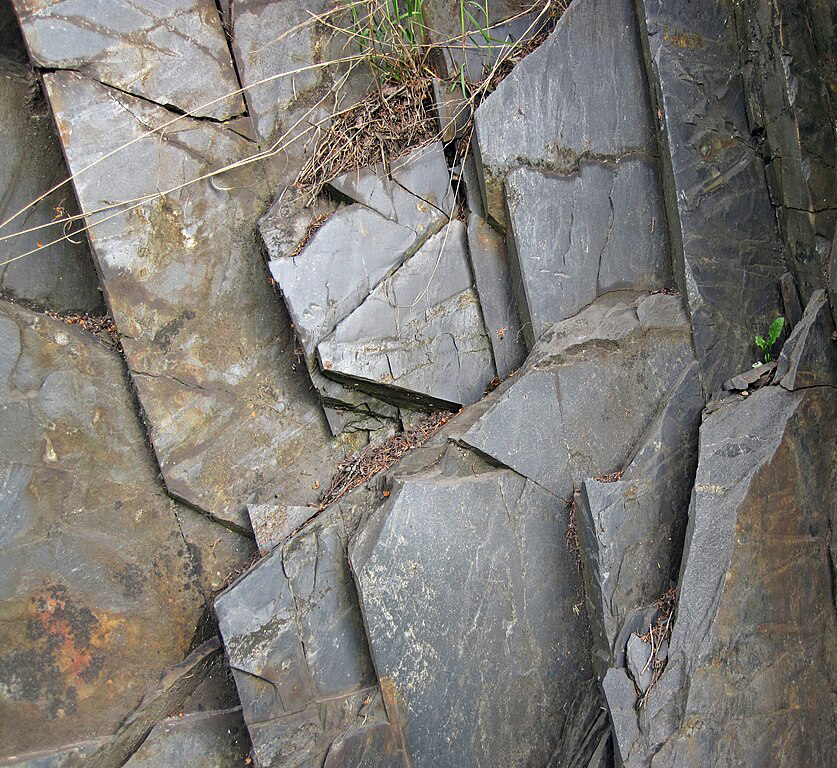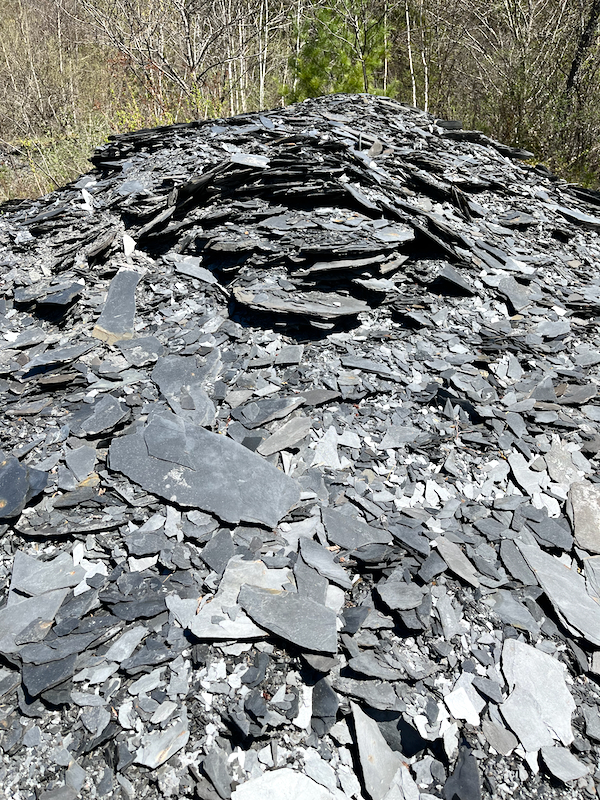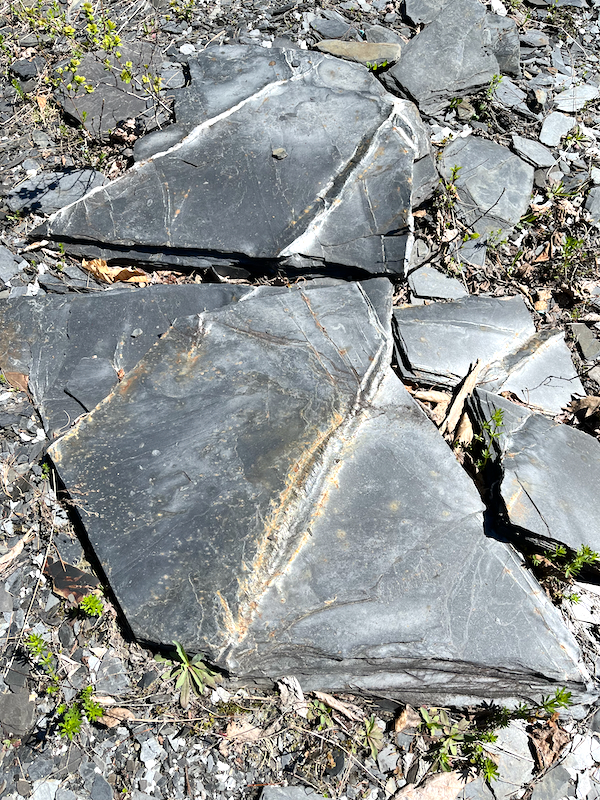Slate
If you’ve seen what looks like thin pieces of rock on an old house’s roof, then you’ve probably seen slate. Slate is a metamorphic rock that forms when a sedimentary rock like shale that’s buried underground gets squeezed and heated a little. It’s often gray but can also be green, red, purple, or light blue, depending on the minerals in it. Slate’s claim to fame is that it’s easy to split into thin layers but also fairly strong, and that’s how it found its way onto people’s roofs in the old days. Workers at the slate processing plant would split the large pieces of slate into sheets about one-quarter-inch thick, then cut them into standard size slate shingles. Then construction workers would attach them to people’s roofs in overlapping layers. Along with covering people’s houses, slate often covered the front wall of most classrooms. Slate’s slightly grainy but mostly smooth texture makes it the perfect material to write on with chalk, and for a couple hundred years, students did that quite a bit! People who play pool or billiards know slate as well, since it’s considered the best material for making the flat area of a pool table.
| Formula | Group or Type | Shape | Hardness | Specific Gravity | Streak | Luster |
|---|---|---|---|---|---|---|
| — | — | — | 3–5 | 2.6–2.9 | — | — |


